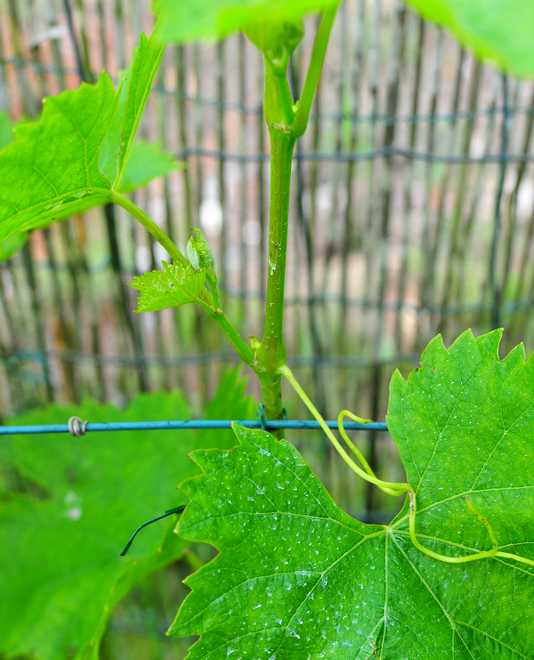
To produce beautiful bunches of table grapes, the vine requires regular maintenance throughout the year. After pruning at the end of winter , treatments and lighter prunings are to be carried out throughout the growth to control this vigorous climber.
Keep the vines clean
To start, you must carefully weed the soil around the vines . This simple gesture limits competition from unwanted weeds. You don’t need to use any chemicals. Use a simple wire weeder (rotofil) to do most of the work between the feet, but without getting too close to the base of the trunks, in order not to hurt them. Finish with manual weeding.
Remove suckers along the trunk
The climbing vine is vigorous. Many long shoots thus appear from April on the old wood of the trunk or below the carpenters, near the base. They should be removed as soon as possible . Otherwise, they divert part of the sap which no longer properly feeds the shoots carrying the flower clusters. As a result, the quantity and quality of fruit may be reduced.
Powdery mildew treatments
Some gardeners are fiercely opposed to the use of treatment products. However, you should know that if you do not treat your vine stock at least, you will never succeed in harvesting grapes.
Be careful, we are not talking here about excessive treatment but rather about a reasoned use of antifungal products. This is simply to give the plant a boost by preventing the appearance of powdery mildew . For this, 4 to 5 treatments carried out between mid-April and the end of August are sufficient (1 per month or every 15 days if the summer is humid). You can spray Bordeaux mixture or sulfur. Either of these two products of mineral origin, compatible with organic gardening, are very effective in limiting the appearance of powdery mildew and thus maintaining healthy foliage.
My gardening tip: Dose your Bordeaux mixture or sulfur solution a little less than what the packaging indicates. A dosage of 7.5g of sulfur per liter of water is sufficient.
Strict trellising of the vine shoots
As early as May, the clusters of flowers in the process of formation are already visible. By light pruning, it is then a question of controlling the often too generous vegetation of the vine . You must thus prevent this climber from going all over the place and you give priority to the formation of beautiful little bunches of grapes, and not to the development of long sterile vine shoots.
For it :
- Remove all the shoots that go towards the ground because they will be difficult to bring back to the trellis. You can cut off the more developed ones at the base with pruning shears or, in the case of tender young shoots, you just cut them off by pinching them.
- Then carefully trellis the remaining vine shoots one by one (if they have not already hung alone) on the iron wires stretched horizontally or on your trellising support. The tendrils of the vine normally coil unaided but sometimes need guidance.
This very strict trellising is important so that the air circulates well between the leaves (which limits diseases) and so that the sunlight reaches the clusters of fruit in formation. At the same time, it also allows you to pass the mower as close as possible to the vines without being bothered by the falling vine shoots.

Remove suckers from the leaf axils
Once the flower clusters are formed, you can see more clearly. Always with the idea of controlling the luxuriant vegetation of the vine, regularly remove the suckers which are born along the vine shoots in the axils of the leaves.
Depending on your variety, there are more or less of them. To remove these still tender young shoots, just pinch them between your thumb and forefinger. It is a job to be repeated every week as soon as the first flowers appear.
To sum up, here is a little reminder of the 5 stages of vine maintenance to be done in late spring :
- Weed the feet
- Remove suckers that appeared on the trunk or at the base
- Carry out a first treatment against Oidium or renew it
- Strictly trellis the vine shoots and sort among them
- Desucker your vine.
